How to Make Money as an Artist: Your In-Depth Guide
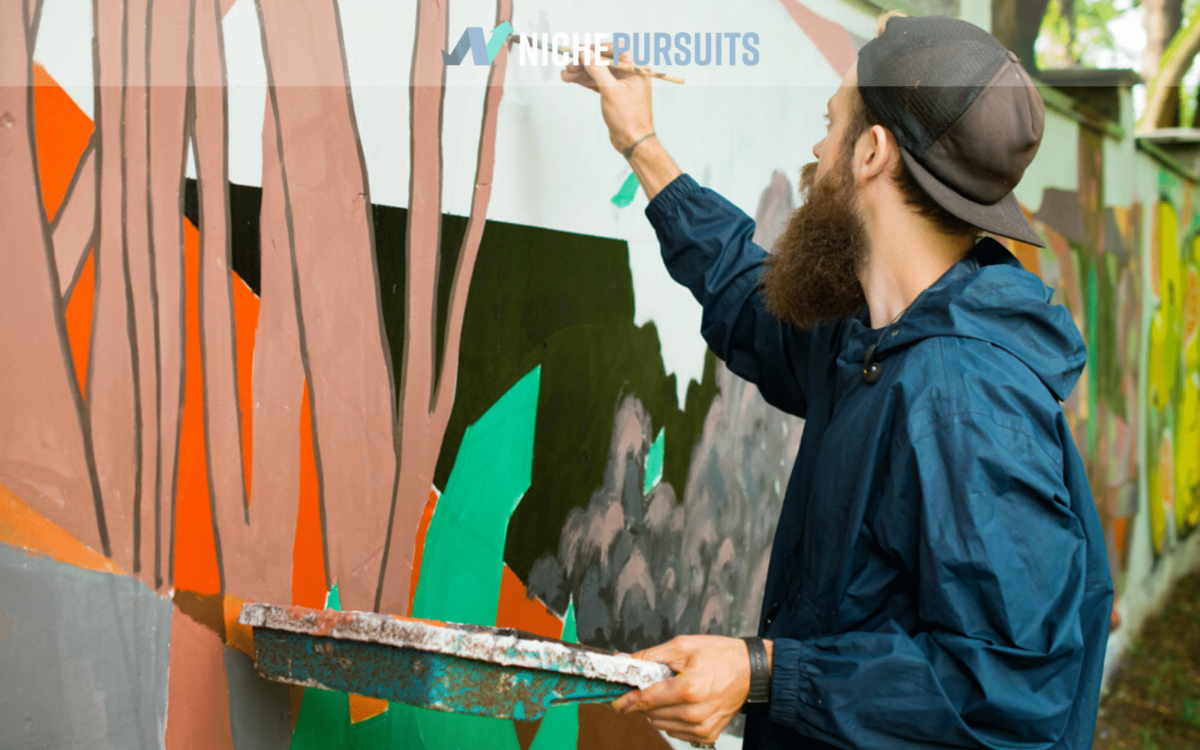
When you buy something through one of the links on our site, we may earn an affiliate commission.
The starving artist stereotype is something that every artist hears about at some time or another. Various parts of the art world are indeed very competitive. There is also a high demand and plenty of opportunities out there.
Where there's demand and opportunity, there's money. So how can artists throw off the starving artist stereotype and learn how to make money with their art?
How much do artists make?
This actually varies wildly depending on what numbers you trust. Does an architect really count? What about a street performer?
Fine art being sold in the New York art market is a far cry from street photography or street art. Or graphic design & tattoo artists (check out these awesome tattoo shop names and tattoo shop slogans), for that matter. All of these are ways to make money as an artist. That also shows just how hard a question like the average income for this profession can be.
As a quick note: a lot of this will focus on the drawing/painting side of being an artist, but we make sure to cover options for sculpture, crafting, pottery, and a variety of other practices that fall under the general term "art." Your exact skills or specialties will make some of these options more viable. Others will be less so.
The main point should be uplifting. You can learn how to make money as an artist. The opportunities are out there for artists to get paid.
Contents
- Research & Planning
- The Importance of Networking
- Power of Instagram & Pinterest
- Caricatures
- Selling Original Pieces
- Sell on Creative-Oriented Websites
- Create a Comic
- Sell Pictures of Original Art on Stock Photography Websites
- Consider Freelance Graphic Design Work
- Is Teaching an Option?
- The Power of Patreon
- Importance of Improving Skills
- The Business of Art
- Conclusion
Research & Planning
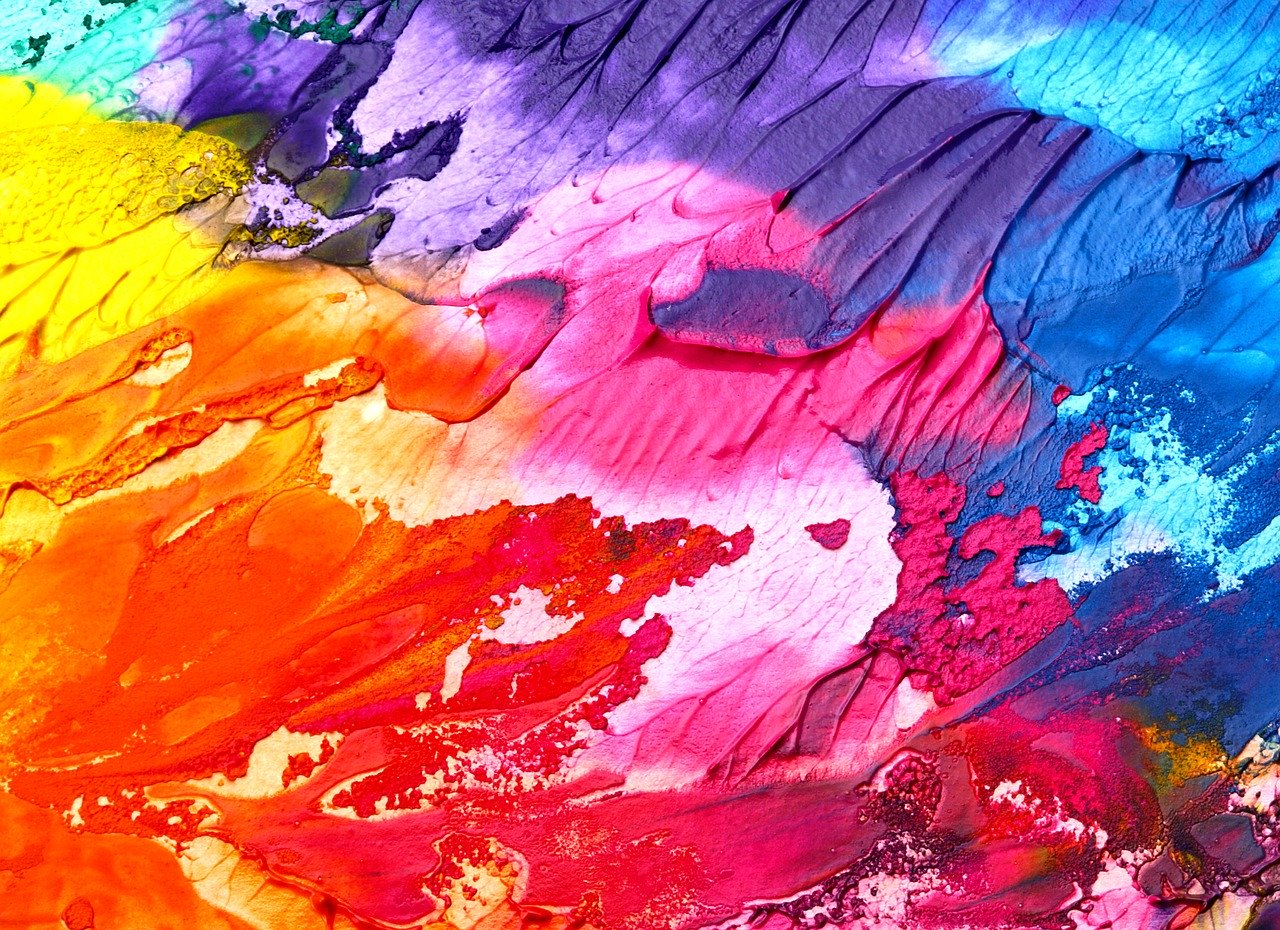
One of the best things a young artist can do is to plan and research. Working constantly on their art is a given. That won't do nearly as much good if you don't have any idea of how your skills fit into the art world. There are some very profitable conventional options, but those spots tend to be limited. They are also often restricted based on your connections.
Networking is important for artists if they are looking to go that route of featured shows in front of deep-wallet buyers. In fact, in that situation, it is critical 99% of the time. Relying on that lucky maybe 1% chance of being discovered is not a legitimate strategy for making money as an artist.
Do the research. What are conventional ways artists in your field make money? What blogs or YouTube channels are out there talking about the craft?
Who is your target audience?
More importantly – which online resources talk about the business of making a living as an artist? Who talks about getting your foot in the door or how to make rent?
These are all incredibly important questions for artists. That's true whether you're a true beginner, a hobbyist wanting to turn being an artist into a side hustle, or a long-term artist who has struggled to stop being a starving artist and become a financially successful one.
Learn as much information from those in the know as possible. You don't want vague theories. You want to know what's happening in the art world right now!
Aside from conventional routes, look at creative options that are available. There are some people using their creative skills to make good money as artists on Fivver, as this article shows. This Forbes article introduces you to a $500,000 a year finger painter. Yes, you read that right.
Even on a smaller scale getting started, there are a lot of great websites to sell original art (make sure to check out how to make and sell art prints here). There are sites that allow you to create video courses teaching art skills, like Udemy.
In other words, there are plenty of options. Do you have one specialty in the art field? Do you have several skills you might be able to blend together? Following up creative or unusual business ideas where you blend some skills together could lead to big things.
The key here is being prepared. Do your research about the art world. Learn what's happening with actual artists in the field you want to go into. Find examples of creative or unusual ways artists blazed their own trails. The more recently, the better.
Along with all that research and planning, learn how to run a business. You can be a creative soul and still run a good business. In fact, if you want to learn how to start making money as an artist, you had better be able to do both. There are many ways to make money with your art. If you want to know how to make money as an artist you need to research every one to find the best match for you!
The Importance of Networking
The artists who make a lot of money understand the business side of being an artist. While all businesses generally require some degree of connections and networking, this is doubly true when it comes to the art world. Who you know matters. Who your connections are matters.
You need to be able to get the attention of the right people. That's done through good marketing, good promotion, and good networking.
Your art can be amazing but if nobody ever sees it, then good luck making a living off of it. Like it or not, knowing the right people to get your art out there is the only way your art is going to be able to influence others, as well.
In addition to having these connections to promote yourself, networking serves several other important options. One is connecting to the local community. Being part of a local art scene means actually being an active part of the scene. Whether it's the head of a local art studio open to the public with city funds, several artists in a different field attempting to create a startup, or just other fellow artists trying to figure things out – networking helps you connect to the supportive community you'll need.
People you get to know may introduce you to other artists for collaborations. You might get an introduction to potential future clients. You might simply get an introduction to a person who eventually introduces you to someone else until that chain leads to your big break.
While I won't say you can't be a successful artist without networking (after all there are always exceptions), you are definitely making things harder than they have to be by not networking. So meet your fellow artists and listen when they give you a connection. You never know where it might lead.
Power of Instagram & Pinterest
Social media in general is going to be a powerful tool for artists. Don't discount Facebook, Twitter, or the dozens of other options out there. That said, Instagram and Pinterest specifically focus on visual pictures and attract visitors expecting to look at something vs. searching for information. This makes these two social media platforms in particular really valuable tools.
There are always people looking for something interesting or different. Many of us love the feeling of being the first to discover a great artist. Having an account on both of these social media websites makes a lot of sense for maximum exposure.
The best single piece of advice: learn how both of these sites work. Every social media site has its own personality and quirks. Hashtags are huge on Instagram. Pinterest uses a combination of individual pictures ("pins") and groups of pins known as "boards." Pinterest also allows heavy use of links. Every single picture can link to a website, a blog, a video, or even a sales page. On Instagram you need to cultivate your followers there.
Don't assume a strategy that works on one will work on another. Take a little bit of time to figure out how to really connect with those online communities. Networking on these sites can get your work around. That means more potential clients or patrons can see your work. These are social media sites that are built to help visual artists thrive.
There's really not a good excuse to not be on one or both.
Caricatures
Caricatures might not be what you had in mind going to art school but they can be a good money maker. Sometimes making money as an artist means using your skills for one type of art that pays the bills. Then you have the income freedom to pursue what you most want to work on.
If you are living in or near an area known for tourism, finding a good tourist spot can mean a lot of cash for an afternoon of caricatures. Especially if you have the drawing skills to do these relatively quickly. This also gives practice learning to read individual people and crowds, to get a sense of which direction to take an exaggerated picture.
These are important skills that can quietly help with networking in the future. Meanwhile, you get to use the drawing skills.
This can also be done at conventions. You can pitch these skills for corporate employee appreciation days, or other similar events. For good artists who develop skills in this area, it can be surprisingly lucrative.
Niche Caricatures
If there's an area your passionate about, why not use your art skills to offer something in that area? An example of this would be niche sketches or caricatures. A great example of this can be found here.
Amber Marie shares her love of D&D on her site, shows what creative projects she's a part of, and does a great job of including conventional and creative services on the same page.
Need good graphic design work done? She lays out those prices. Keep scrolling down and you see the niche caricatures. Want a sketch of your D&D character? Or a picture of you as a goblin? Those services are offered. They're original, creative, and probably do extremely well.
There are an estimated 14 million D&D players around the world. A few of them would probably pay for a goblin picture of themselves. This type of creating your own niche is a great way to get paid for your art. If you can create your own road, that's often one of the best paths to take!
Selling Original Pieces
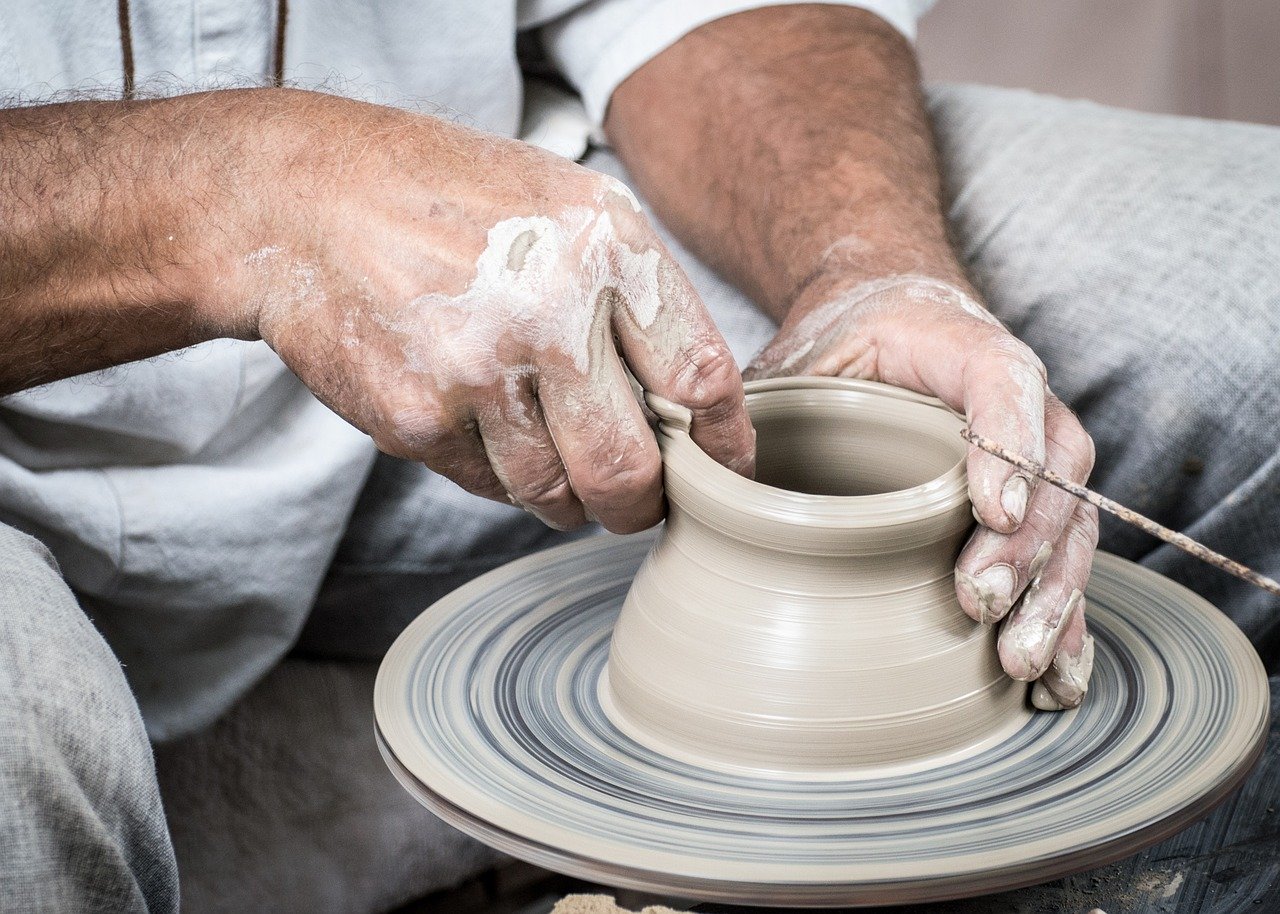
There's something about detailed pencil sketches that I just love. I'm not the only one. Original pieces can still cater a high demand. Whether this is sketching a popular scenic area, taking the time to draw people who sit to model, or creating your own original prints, pieces, and designs to sell in-person or online, there are plenty of options here!
This can be challenging at first because you're responsible for creating demand. That could mean going to a high traffic place and sketching while in the open. This could mean creating a website and learning to drive traffic to get attention. This could mean some serious social media advertising campaigns.
You need to network, hustle, and create the demand. Understanding this is one of the things to research can help guide you to something that will work. One of my best friends is a stunningly good tattoo artist. She sells really high quality colored pencil sketches as a side hustle, which allows her to keep drawing what she wants even if no one wants a bobble head Darth Vader tattoo for some reason.
For most artists making money from original art may be a side hustle while using those art skills in other areas to pull in early paychecks.
This goes for non-drawers or non-painters, as well. If you want to make money as an artist creating pottery, then aside from teaching you need to find a way to make and sell pottery. Start your own company - check out our list of pottery business names.
Wood carvings, stone work, original crafts, all of these are artistic skills in high demand. The widespread desire to support artists online is very clearly out there, as well.
Take a look at the sheer number of websites designed around helping artists sell. Just a small sample of them are in the next section.
Sell on Creative-Oriented Websites
Most people only know about one or two websites where artists can sell their work online. Most know about Etsy. Then most people have heard vague stories about selling on Amazon, eBay, or Fivver. This is only a small part of the real story.
The truth is there are many dozens of websites online focused on specializing in art work. Many of these are completely open two new artists displaying and showing their wares. These aren't small sites, either. Some of these sites can brag of hundreds of thousands, or even millions, of monthly visitors. Knowing these sites are around can help worried artists see the opportunities that are out there.
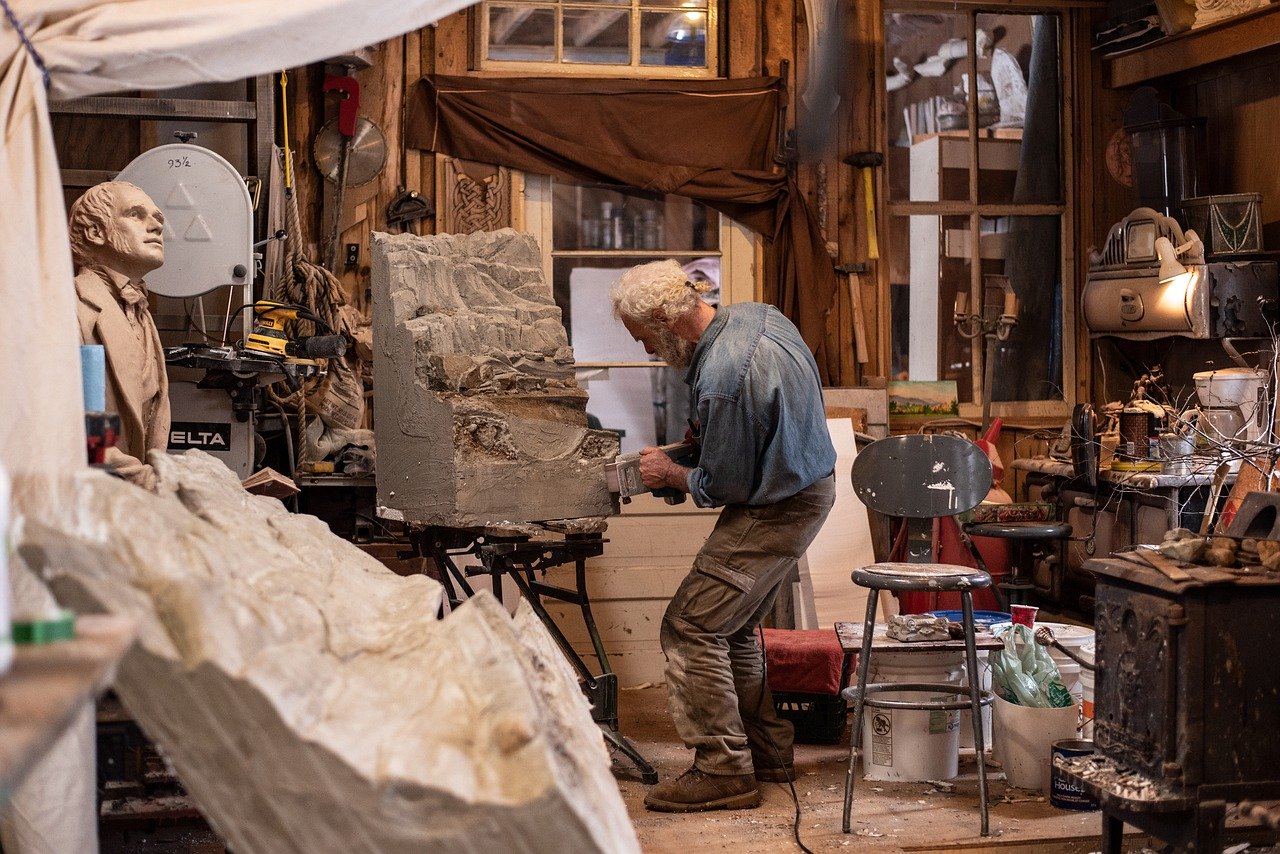
Etsy
Etsy is unquestionably the largest and best known specialty store for arts and crafts. They have a strong reputation for allowing any small provider to sell their works. Etsy features homemade jewelry, paintings, sketches, glasswork, sculptures, and more.
This is one of the first places that new artists should take a look at. This is especially true of artists looking to sell their own pieces or creations. They have incredible amounts of traffic which means more potential buyers for each and every artist on there.
Getting attention still matters. There's no denying there are challenges there. If you are an artist looking for a place to sell your work, Etsy needs to be up there on your list.
Saatchi Art
Especially known for their wide display of paintings and drawings, Saatchi art actually sells a wide array of pieces by artists. Aside from drawings/paintings, the site also sells sculptures, photographs, and other special pieces.
One thing that makes Saatchi stand out is the home page that focuses on grouping pieces of work on sale based on price. Need something under $500? Click on that button. Have $1,000 to spend? Push on that button instead.
The smallest group is "Artworks up to $500" while the most expensive group is the $5,000-$10,000 group. Saatchi takes a 35% commission from each sale, which is actually fairly in line with many standards in different parts of the art world. They handle shipping, properly packing, crating, and delivering the art from the artist's studio and taking it to the collector's home.
Artfinder
Another art based website, Artfinder is a great place for many niche artists to sell original pieces. This site isn't just good for painters, sculptors, and photographers. This website is also very big on print art, digital art, and even collage art. Niche artists in those fields can find solid promotion if accepted through the application process.
Artfinder works like an online dealer. They show the artists' works and help connect them to buyers. This can be a way to connect with buyers that the artist otherwise never would.
Ugallery
Ugallery is another popular option for artists. They can upload their works and Ugallery puts out original art for sale. Ugallery is specific that they require original work. No reprints or anything like that. In addition, they have an entire large section featuring new work.
That encourages frequent buyers to take a look at new art every time they return to the site. This exposure is something several of the other artist-based sites don't offer.
Fivver
Fivver is not just for artists, but stick with me here for a moment. Depending on what skills you're focusing on, Fivver can work as a gateway. There are many stories of artists making a large amount of money from Fivver. That doesn't come from $5 intro gigs.
Fivver definitely likes to tout the success artists have had on the platform, but this does tend to work better for certain types of artists versus others. This article by CNBC shows how voice actors have done extremely well here.
Other easy to find stories about artists hitting six figures on fivver include a puppeteer, move voiceover work, quick parodies, or TikTok-like humor videos. There are less success stories for things like photography, painting, pottery, or sculpting, all of which would be poor fits for Fivver but have the other sites on this list.
However, for the…really "out there" niche artists this could be worth considering. Especially in the early steps of building a clientele.
Endless Niche Options
There are endless niche options out there for about everything imaginable. There's the widely known and popular, and often NSFW, DeviantArt, to niche sites that only focus on nautical art. Or botanical pictures. Or a very specific style of pottery.
Chances are there's something out there that will meet your artistic direction. No matter how niche you get.
Create a Comic
This could be a simple comic online. It could be a larger graphic novel project. Working on getting a comic accepted via the traditional route is still possible. This is difficult and it take a lot of work and marketing. All while knowing it's actually not a sure thing to ever work.
The better route to go for most artists is to create an online comic. There are plenty of popular online comics have built a huge following. The key here is to have an idea, a style, and to be consistent. The best business route is to decide on a comic name, get a domain name, build a website and some cheap but reliable hosting (we recommend BlueHost), and begin creating and learning how to promote it.
This can start off as a passion project even by a hobbyist. Practice your refined sketching skills, figure out what you want to work on, and that can be an on-going project while working on other art projects.
Funding can come from putting advertising on the page, creating books to sell as the number of fans grow, as well as getting Patrons from Patreon.
There are a stunning number of options online to share comics, to gain attention, and to promote. The social media platform Reddit has a strong supportive comic community. Especially for beginner comics.
While this won't be for everyone, for the right artists creating a comic is something they should seriously consider. The internet means the ability to create and have creative control over the work as you develop it. There aren't too many routes that give this type of freedom. Or have this much potential.
Sell Pictures of Original Art on Stock Photography Websites
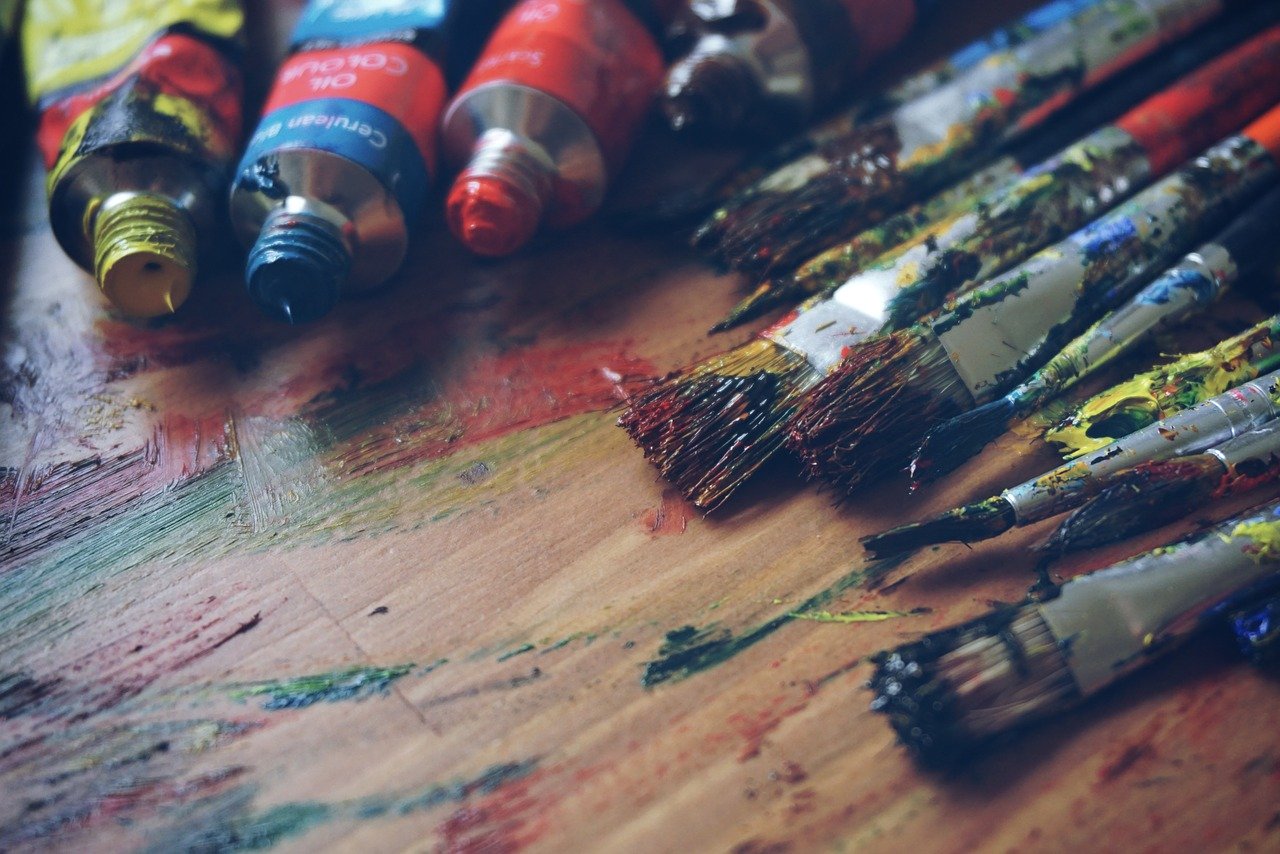
Stock photography sites need original content to sell. For photographers this makes a lot of sense. In fact, if you're big into photography as the centerpiece of your artistic business endeavors then this should be one of your main strategies for making money with your art.
Pictures of sculpture work, artistic pieces, or even paintings are also often in high demand. Websites need these pictures, as well. Finding a good picture of these things can be surprisingly difficult.
Photographers can make a lot of money selling pictures online. Conventional sculptors, potters, painters, and drawers can further monetize their works by providing stock photos of their work.
Shutterstock
Shutterstock is one of the really big names when it comes to stock photos. They boast of well over 300 million images and have set the standard that other stock photo companies are working to emulate. The sheer number of customers buying credits to use Shutterstock images shows just how much potential money is in play. Especially for unique high-quality photographs.
Shutterstock specializes in really outstanding photographs. Nothing blurry off an old iPhone here. These are high resolution photographs that are really well done. Having an artist's eye for details is going to be a major benefit. Your photos need to really be up to snuff to get the most out of this stock photography platform.
Adobe
Adobe stock images is another impressive stock photography site that gets an enormous amount of traffic and offers plenty of potential (but so do these Adobe alternatives). Good photography is valued heavily here, as is video. Adobe also offers illustrations and vectors. In other words, artists with an array of skills in these areas have plenty of opportunity to sell good work.
As with other major stock photo and illustration sites the income can take time to develop. The more work you have available the more likely the millions of monthly visitors are to find it and purchase it.
This is a specific way to make money with art and photos. It's also an income stream that a lot of artists either don't know about or simply don't take advantage of.
Getty Images
Getty Images is the third name of the big three when it comes to stock images or stock art. Offering images, videos, and music, there are some creators have had a great deal of success selling here. This goes for photographers selling stock photos but also artists who would take various pictures of their work or their work being admired. There are millions of blogs out there that need good photos. That includes photos of various works of art.
While that sounds like something there would be plenty of, you might be surprised. The demand is there and this can be a great way to create a steady online income stream. This might be a part-time income for artists in most cases. That is still extra revenue to continue to develop your other artistic endeavors.
Getty Images is definitely one of the big three that artists need to check out.
Other Stock Photo Sites
While Shutterstock, Adobe, and Getty Images are the three big names here, they're not the only ones. There are a stunning number of stock photo sites on the internet. Look around for opportunities. You never know when another site will gain traction. Or when you find a niche stock photo site that gets the right kind of traffic to sell a lot of your photos.
Consider Freelance Graphic Design Work
If you want to know some of the most common paths to make money as an artist, then look at design. Graphic design is in high demand. There are a lot of companies out there who will gladly hire a full-time graphic designer to do this type of work. There is also an incredible demand for freelancers.
While this might not be the ideal way to make money as an artist, the skills artists learn can make them excellent graphic artists and designers. Artists have the option of going this route full-time or they can use it as a way to make money and fund their creative endeavors as they learn how to turn those into a consistent full-time income.
Freelance design work still requires learning important business skills while using creativity on the actual projects.
One thing that is really important to keep in mind is that graphic design work is competitive. There is plenty of work available in this field, but there is competition. You'll have to work for it, but the work is there.
Is Teaching an Option?
There is plenty of demand for teachers, tutors, and products that teach art skills. This can be a mixed bag to some extent, but there are plenty of options out there if you're interested in teaching art. Many people have creative passions (and they may want great gifts for creative people). Even just a genuine desire to learn a new artistic hobby. That means there's always going to be a demand for teachers. The best way to make money as an artist teaching your creative skills is something to do some research on.
Art Teacher or Professor
This is the conventional route, and it's often the "backup plan" of many artists as they begin college. While these jobs do exist, the competition for them is incredibly fierce. When K-12 schools are under a budget crunch, which is increasingly common, often the art teacher positions are among the first ones to go.
Professor jobs are even more scarce. While there's plenty of work for part-time or adjunct professors, those are low paying high-work positions with little scarcity. The competition is still fierce for those. If you only need a little bit to get by as you're building the art career these could be good enough. They also often give access to supplies and studio space.
There are jobs here, but often times expectations are out of line with reality. Especially in regards to competition for the job and actual pay. This information isn't meant to be discouraging. However, it's important to be aware of what the real world situation is when making plans.
Acting as an Art Tutor
There are many opportunities for teaching as a tutor. There might be parents looking for tutors to encourage a child's gift, students looking for additional coaching or support, or even adults who have always wanted to learn. In addition, there are also plenty of adults who used to love art, got away from it for years, and want guidance getting back into it. Or you simply might be ahead of other artists and can help them improve their skills.
Whatever the group or the reason, the demand for art tutors is high. This is a way to not only sharpen your art skills while guiding others but improve your teaching skills, too.
Creating Your Own Online Course
There are countless websites online like Udemy or Skillshare where you can create, upload, and charge for a video course that you create. These are video courses, and allow buyers to follow along as you give step-by-step instructions to help guide them.
The fact that you learn a wide variety of different skills as an artist means that you could potentially make several unique courses to sell. You will need some decent video skills or ideally a skilled videographer who can help, but this can open up a major income stream. Especially if you pair it with a successful YouTube channel.
Build YouTube Channel
Art is a visual medium. Why not create a YouTube channel about your experiences as an artist? There are so many options here for great video content. Show works in progress. Talk about the challenges of making it as an artist. Talk about the business challenges of a creative.
You can use this as a test ground for art lesson videos that you then refine and make better for your own online course to sell. If you get enough followers and subscribers, the YouTube channel could result in a very healthy full-time income. All from doing what you already love. The only change is actually recording and posting the videos.
The Power of Patreon
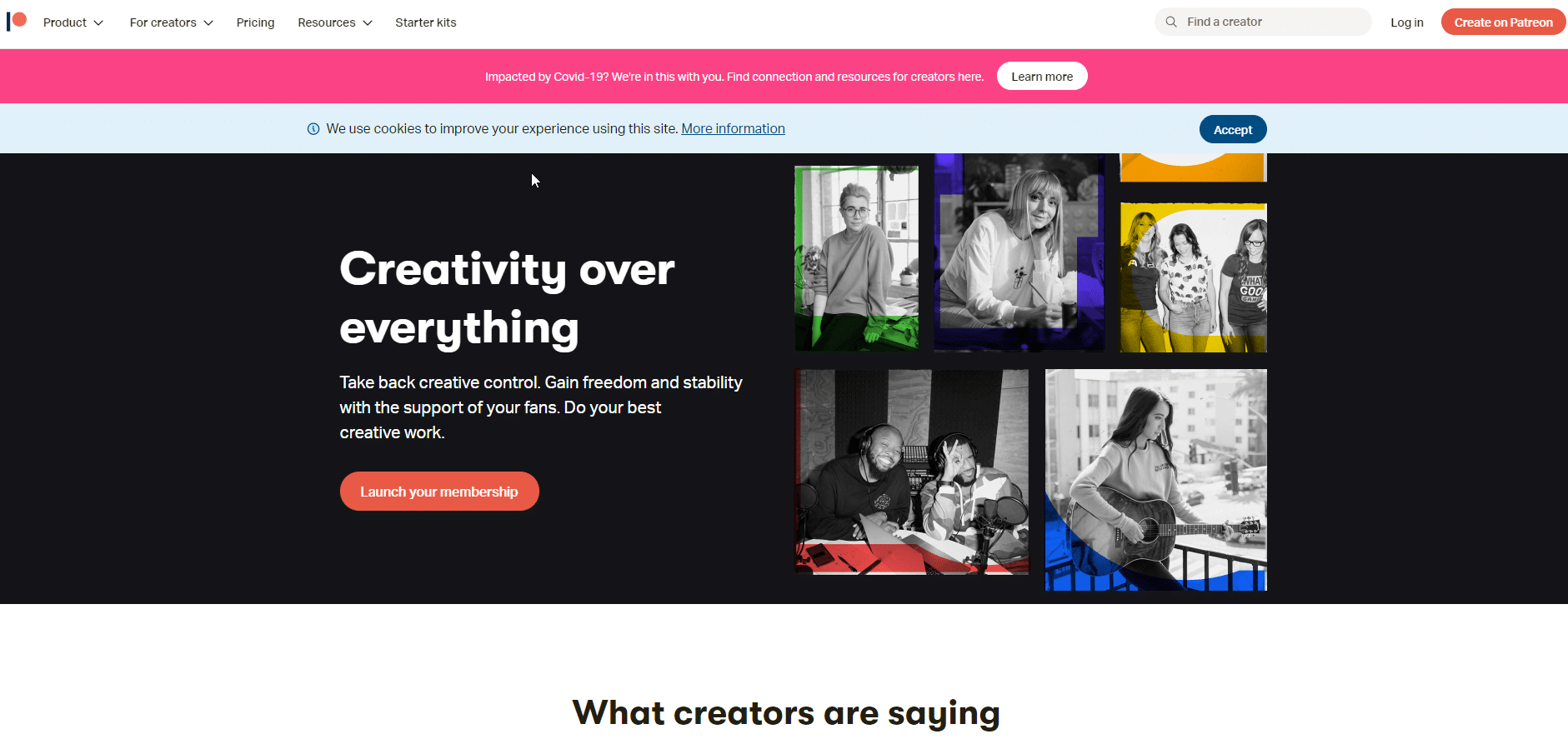
Patreon has been a game-charger for a large number of artists and content creators. As well as for those many creatives who consider themselves both. Patreon is a platform where individuals can choose to directly support favorite groups, artists, projects, and people through direct monthly payments. Patreon does take a cut, but this means if 100 people want to pay $1, $5, $10 or more on a monthly basis to support your art, this allows them to do it.
In exchange the donators or "Patrons" usually get something extra whether it's Patron-only videos about your work, access to a Discord community where you talk and interact with them, or whatever you offer at each support level (and there are lots of other ways for how to make money on Discord too).
Patreon is great for artists for multiple reasons. The direct fan support is one. You're not beholden to any single employer, one donor, or anything like that. People who already support you can do so with small amounts of money, but that adds up if you get thousands of people to support you. That's financial and creative freedom.
The other huge benefit is that this is an easy add-on to whatever else you're doing. Do they love your YouTube channel? A blog? Saw a recent art exhibit in person and want to support your work? All these individuals can jump on the computer and choose to become a Patron.
Multiple revenue streams are important to any beginner artist looking for ways to make money
This leads to a very steady monthly source of income. That can provide stability and support while creating your next artistic work. No affiliate links needed, no college degree, no approval of the art industry. If your art can attract fans willing to pay to support you, then you can make that monthly money.
Importance of Improving Skills
Most artists tend to struggle with the business side of being an artist. Obviously there's a creative passion if you go into an art field. Most artists get satisfied with where they are at. At least while struggling to get to a solid consistent income.
No artist should be complacent. Working creative skills over years just continues to sharpen them and make them even better over time. This should make your work more valuable. More skills should mean better work. More ideas for what to do. Maybe even more inspiration for what to make in the future.
While beginning artists understand how important it is to keep working and keep improving their skills, it can be easy to let that slip once you see a bit of success. Getting complacent is never a good idea. The commitment to continue to get better is crucial to go the type of quality work that is mandatory for making money as an artist.
The Business of Art
The business of being an artist means learning the basics of running a business. This is something many workers in various fields end up having to learn. In fact, this is one of the biggest stumbling blocks for newly self-employed. Or people failing at creating a profitable side hustle. The art business isn't just important to a director who runs an art gallery. Individual artists need to think of themselves this way, as well.
The incredible focus most artists share when it comes to strengthening and honing their craft is important. In fact, in many ways it is crucial.
Budgeting
Budgeting is a crucial part of running a business. While this sounds like an easy concept, business budgets can differ quite a bit from your average home budget. You will have big one-time expenses. You need to save for quarterly taxes. Then there are those monthly bills that still exist.
Depending on your market you may find in certain parts of the year account for most of your business. If you do 50% of your business in December, you better be very good at budgeting through the rest of the year.
Business budgeting is a very different animal from your average home budget. If you have some friends or family members who run their own business, talk to them. Most people are happy to give some advice when they're seen as an expert. People like to help out. Learn a bit about how business budgets work, the surprise payments that threw them off the first time, and other challenges that the self-employed face.
Getting this information is extremely valuable. Just from talking to self-employed friends you get great tips, avoid common mistakes, and can catch up with a friend, family member, or friendly acquaintance. If you can get that knowledge before you start, all the better! That means less costly learning experiences, aka "mistakes," when getting started.
Branding & Business Mindset
The creative side tends to come easily to artists. Trying something new, creating something out of nothing, those types of challenges are easy. Being able to envision things down the line is easy, but the practical parts of branding and running a business tend to be a bit more difficult.
One of the most important things for artists to do is just that: view themselves as a brand and their art as a business. That means polishing up the marketing skills. To some artists this might feel like selling out. There are a lot of stereotypes that tend to pit creative or "true" art vs. "selling out" if you make money. Ridiculous. Famed artists in Renaissance times worked for noble patrons because their work was in demand. Which made it commercially viable.
Creating art and cultivating an audience takes time and effort. If you want to do art as a hobby, then you can do whatever you want. On the other hand, if you want to make a living doing art, you need to learn how to create art you can get paid for.
If you do this well, then have the money and time to create an audience for your art and an awareness for your brand. Being a paid artist absolutely involves understanding business and getting paid fair rates.
Learning basic branding and business skills can be done through courses, internships, or if you're still in college why not pick up that business minor? The combination alone will certainly get some attention.
Creating Your Own Online Presence
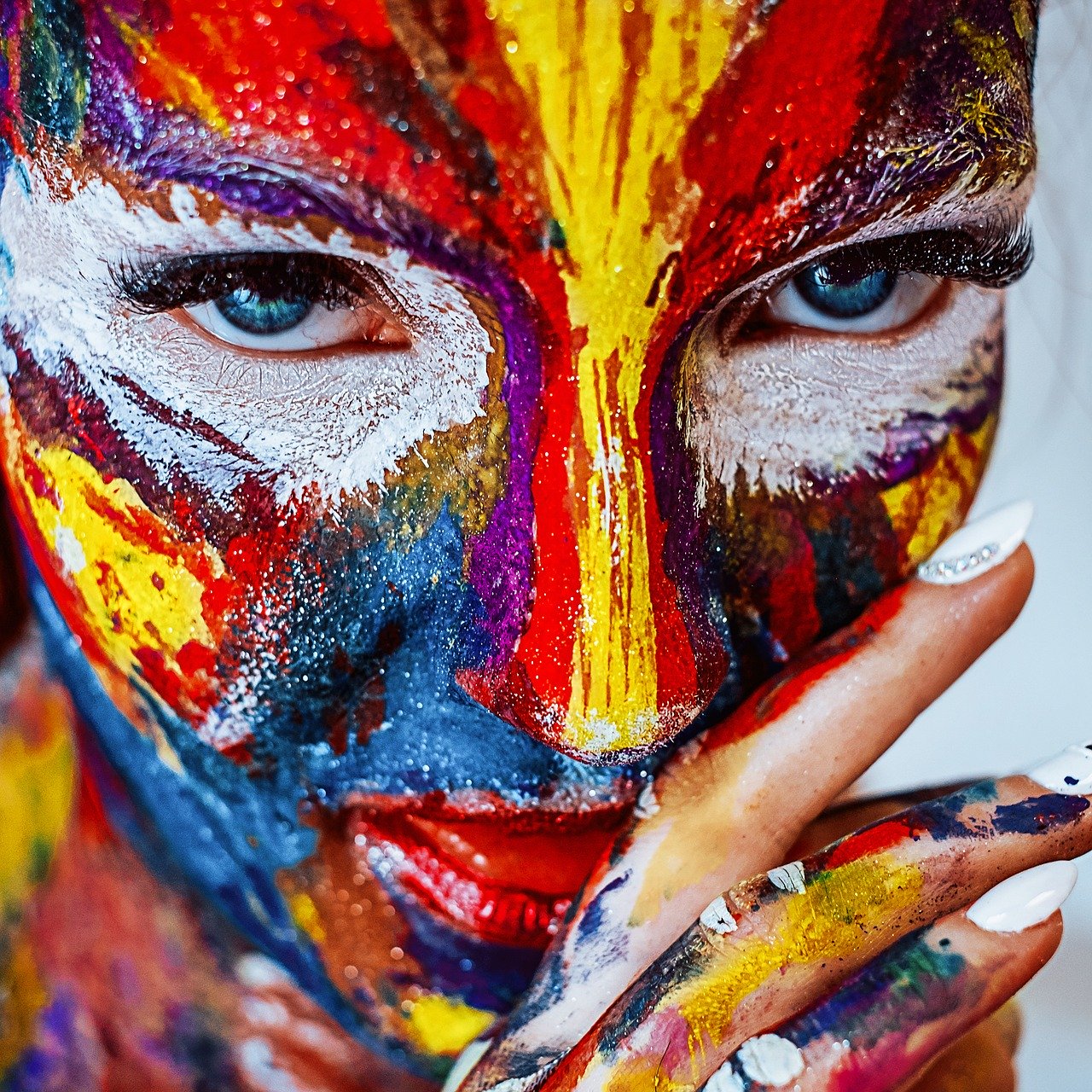
There used to be gatekeepers everywhere in the art world. Depending on what you really want to break into, there still are. The difference is that with the internet, social media, and how cheap it is to build your own website, you have the ability to promote yourself to the public. Getting worldwide exposure in some cases if you do a good job of it. A portfolio website is a great way to show off your artistic skill set (learn more about artist websites here). Blog posts can show your knowledge, skill, and personality.
These tools are absolutely crucial for artists who are serious about doing art for a living. You have the ability to grow a following, share and promote your art, gain a dedicated audience, and get paid money for your art. Possibly even create multiple income streams with your creative work.
Being online is important for almost any business in today's world. That said, you can make the argument that few have profited as much as artists.
If you are interested in learning how to start a blog, check out our full guide below.
Learn to Create a blogPower of Social Media
Social media is going to be a powerful tool for virtually any artist. This not only goes for Pinterest and Instagram but also for other social media. Social media is a powerful tool to share your art with the world, get attention to you and your artistic business, and use inexpensive social media advertising to increase your following.
When you are on multiple popular platforms, that's just even more ways someone can discover you. Picking up fans will take time, but the efforts do pay off.
The Long Game
While some artists may find quick success, it's admittedly a long climb for most. Understanding that this can take time means better planning. Most artists don't hit a home run with their first works. Approaching your art as a business and building that brand will take a lot of time and effort. Artists who continue to work on their craft and work on creating a viable long-term business will be far more likely to make good money from their creative work.
Conclusion
You don't have to be a starving artist. One of the biggest reasons talented artists give up on their art is because of financial stress or woes. Understanding how to make money with your art by creating a brand and running a business isn't "selling out." It's giving you the tools, skills, and ability to create more and better art. When you control your cash flow, you have control over how to express your muse.
There are always going to be more creative options to get out there and find a way to express yourself. When you learn how to make money from art even more doors open. Hopefully this guide has helped inspire you to find that ideal path to make a living from your art.
Want to learn step-by-step how I built my Niche Site Empire up to a full-time income?
Yes! I Love to Learn
Learn How I Built My Niche Site Empire to a Full-time Income
- How to Pick the Right Keywords at the START, and avoid the losers
- How to Scale and Outsource 90% of the Work, Allowing Your Empire to GROW Without You
- How to Build a Site That Gets REAL TRAFFIC FROM GOOGLE (every. single. day.)
- Subscribe to the Niche Pursuits Newsletter delivered with value 3X per week
My top recommendations
















